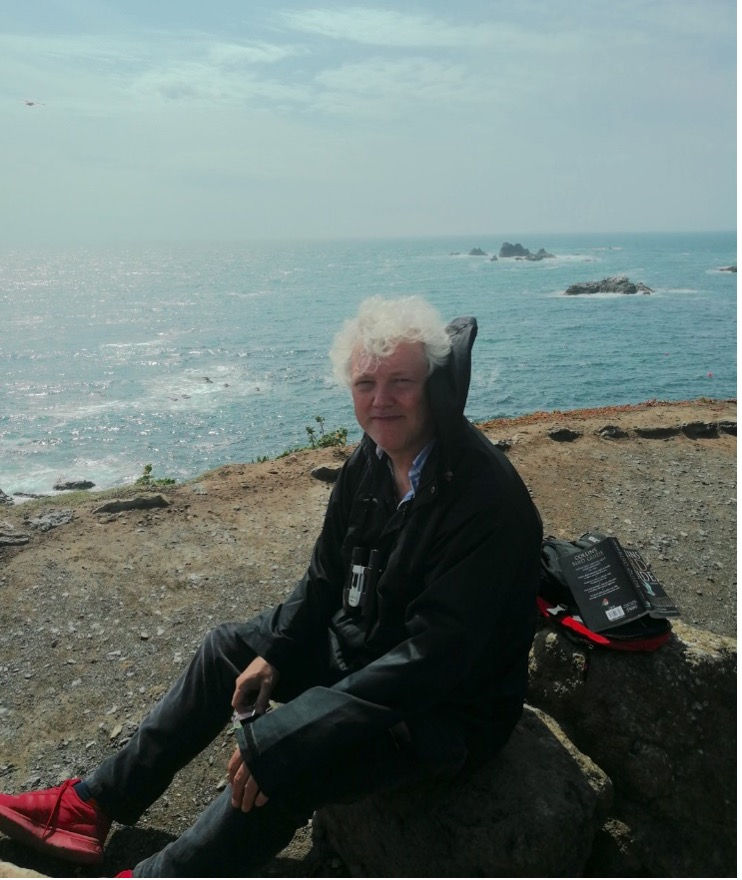Interview with Dr. Stacy Boldrick on Iconoclasm in Museums (Part 1)
- magsmag8
- May 25, 2022
- 4 min read
Updated: Nov 24
Interviewed by the MAGS Team, April 7, 2022.

Stacy Boldrick pictured with her cat. Picture courtesy of Stacy Boldrick.
Where did you start your career?
I did an MA in Art History at the University of Pittsburgh and then a PhD in Art History at the University of Manchester. In my PhD research, I was looking at funerary sculpture and ritual in the later Middle Ages in England. I taught some seminars on medieval art using contemporary art. I went from there to work at the Henry Moore Institute in Leeds, where I curated some exhibitions on medieval art and contemporary art. It was there that I began to develop my research on iconoclasm.
Much later, in 2011, I was asked to work on this exhibition called Art under Attack, which was at Tate Britain, and it looked at the history of British iconoclasm from the Reformation to the present day. With that exhibition and after editing a couple of books that brought together other people's essays on iconoclasm, that's when I began to realize how under-researched the area was. It's a complicated subject. Nobody necessarily wants to objectively document acts of destruction in the way that people like to document acts of making artwork. It was an area that was very under-researched. But over the past 20 years, I think, it developed as a field with people in all disciplines working on it. Could you give us some brief introduction to the topic of iconoclasm?
When we were coming up with the title for the Tate Britain exhibition, there was some focus group research that told us that nobody knows what the word ‘iconoclasm’ means. So that was one of the big things we tried to explain straightaway.
The word 'iconoclasm' was first used really in English during the Reformation in the 16th century, and it comes from two Greek words, one of which is eikon or image, and one of which is klastes, which means breaker. So, iconoclasm means 'image breaking'.
To explain the term in simple ways, iconoclasm is the act of deliberately damaging something for a reason. Some scholars have slightly different views on what counts as iconoclasm. Objects that are in storage and collections and never seen; that is perhaps an unintentional act of obscuring an artwork, of blocking it from view. For another person who works on iconoclasm, they might debate this with me and say, 'that's not really iconoclasm.’ ‘It's got to be material; it's got to be a violent action of protest; it's got to be deliberate'. So, the basic meaning is an image that's been deliberately broken in some way, or attacked. Could you give us some examples of the iconoclasm, like very famous or classic one?
The Rokeby Venus in the National Gallery is a famous example of iconoclasm - maybe one of the most iconic ones in the West. Mary Raleigh Richardson, the suffragette, was in the National Gallery protesting against the imprisonment and force-feeding of Emmeline Pankhurst. The suffragettes were fighting for the right for women to vote in Britain, and they adopted a number of strategies, and one of their strategies was to attack cultural institutions. They did this in various ways, to the point where national and public institutions were told to take away things like umbrellas and anything that might be hidden in a woman's muff (handwarmers that could conceal things). That happened in 1914, and it was reported in a very sensational way. Mary Richardson was cast as ‘Slasher Mary’, this hysterical, deranged woman and cold as well: a woman who was an object of scorn. That was the reporting. In the papers, the damage to the painting was described as if the painting was like a human body: it had ‘gashes’ and ‘lacerations’ and these types of things (see Boldrick, Iconoclasm and the Museum).
Just taking that one incident as an example, that represents a lot of things that often happen within acts of iconoclasm. With all of these acts, there's a degree of sensationalism in the reporting of the event. Sometimes you get things that are completely made up; and sometimes you get oppositional stories and perspectives around it. They can be difficult things to research, whether you're looking at something that was damaged in the Reformation in the 16th century, or something that happened yesterday.
Once you start to delve into archival things, you can get a bigger picture of what that act of iconoclasm represented. And it goes well beyond what the tabloids will report or what is headline news: 'shock', 'horror', 'this happened outrageous'. Anytime there is an attack on an artwork in a gallery, lots of people get very upset and it becomes headline news. And so, one of the issues that we had with the exhibition when we were working on it, we were at one point asked to cancel the exhibition as it might provoke attacks on artworks. That's an attitude that I have come across: the fear of discussing iconoclasm, the fear that even discussing iconoclasm will inspire people to go out and attack artworks. And that wasn't the case with us at all.
See Part 2 for the Rest of the Interview
Edited by the MAGs Team







Comments